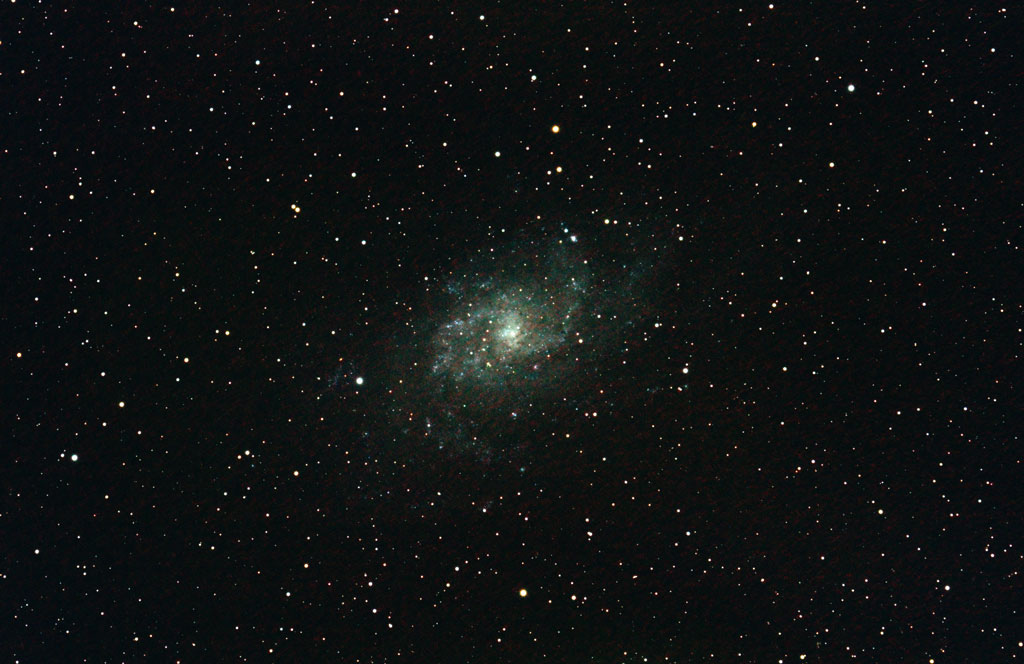There’s only so much you can do to get good astrophotography when the sky is lousy and your tools are inappropriate, but that makes the whole ordeal more challenging, and the final result, each and every photon collected and carefully placed on each and every pixel, a much more rewarding process.
This latest work of mine, albeit coming with satisfaction, bears nonetheless the burden of a dramatic realization: the unmodded camera naturally offers a varying sensibility in the three color channels: while blue and green let almost all light pass and be collected, the red channel has a very low response, which decreases as the wavelength increases.
Despite this, I made do with what I have and produced a decent picture of what is actually a very faint object. Even though you should be able to distinguish M33, aka the Triangulum Galaxy, with your naked eye in diverted vision from a very dark site, its surface brightness is quite low, it being a decently extended object.
M33 is a galaxy in our own local group, a cosmic neighbor, if you will. And it’s coming over for a visit, approaching us at the steady pace of 24 km/s. It will take quite some time, though, as it is now located at about 3 million light-years away.
If you were on a planet somewhere in M33, on a dark night, and you’d set your gaze upon M31, you’d be astonished. It’s been estimated that the distance between these two neighbors of ours is about 750000 light-years. M31 would then be twice as large and four times as bright if seen from M33! What a show!
We’re still stuck on Earth, but don’t despair: good binocular and a dark sky can offer breathtaking sightings of both M31 and M33.


